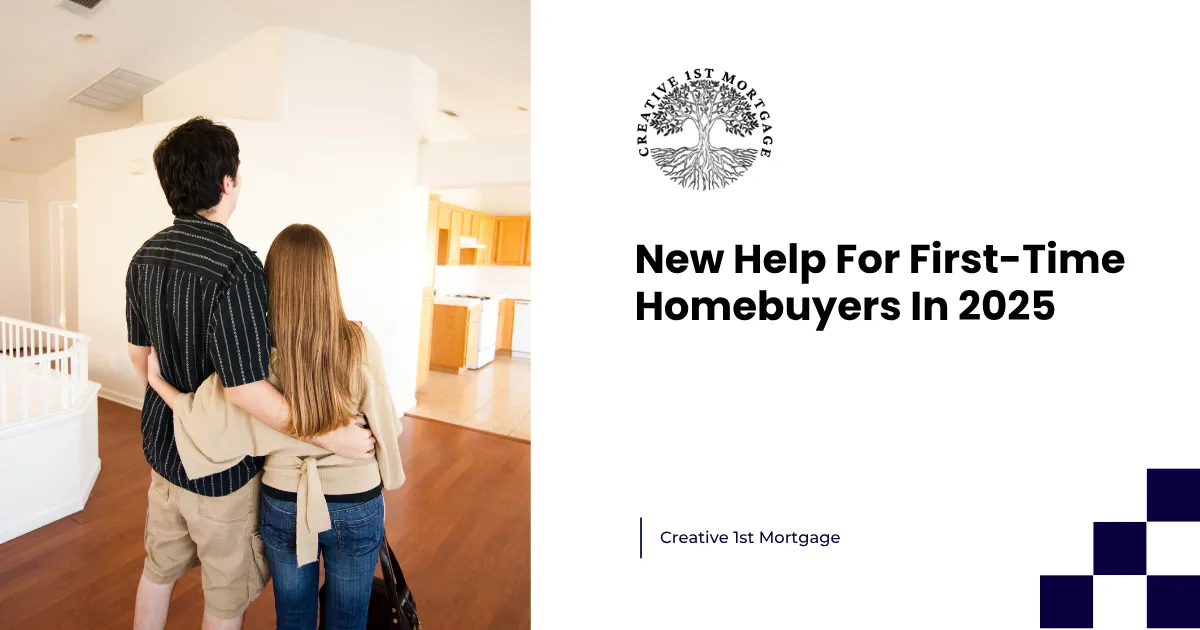
Help For First Time Homebuyers in 2025
If you’re a first-time homebuyer in 2025, there’s finally some good news worth celebrating.
Yes, affordability is still a challenge. Home prices and interest rates remain higher than many would like. But this year, a growing list of updated programs and lending changes are making it easier for first-time buyers to get into a home — even if you don’t have a huge savings account.
Let’s take a look at what’s new and how it could work for you.
More Down Payment Assistance Options
Most people know about FHA, VA, and USDA loans — all staples of low-down-payment lending. But in 2025, we’ve seen a surge in down payment assistance (DPA) programs from state housing finance agencies, nonprofits, and even private lenders.
Many of these programs now offer:
Grants (you don’t have to pay back)
Forgivable second loans (only repayable if you move or sell too soon)
Coverage of up to 5–6% of the home’s purchase price, which can wipe out your down payment and often reduce your closing costs too
More Flexible Loan Options for Buyers with Low Savings
One of the most exciting trends this year is the push toward more flexible underwriting.
If you’ve got strong, stable income but haven’t had time to build up your savings, you may now qualify for:
Fannie Mae’s HomeReady or Freddie Mac’s Home Possible — 3% down payment programs with reduced mortgage insurance and potential closing cost credits
New lender-specific programs offering income-based pricing or reduced interest rates for first-time buyers
Use of alternate credit data like rent, cell phone, or utility payment history to help boost your mortgage eligibility
These shifts aim to make homeownership more inclusive and realistic for working households, especially in today’s tougher market.
Why This Matters in 2025
With housing prices still high in many parts of the country, and rent inflation putting pressure on monthly budgets, programs that reduce upfront costs can be game changers.
According to a 2025 housing report from the Urban Institute, first-time buyers now make up nearly half of all home purchases, and most of them rely on some form of assistance.
If you’ve been holding off because you didn’t think you had enough saved — this could be your year.
What’s the Catch?
There isn’t one, exactly — but every program has rules. Some require you to live in the home for a set number of years. Others limit your income or the home price. A few are only available in specific zip codes or through approved lenders.
That’s why it’s important to work with someone who can evaluate your situation and match you to the best option, not just the first one you find.
Final Word: Don’t Count Yourself Out
If you’re ready to buy, but worried about the upfront costs — don’t count yourself out.
Whether you’re early in the process or already pre-approved, a second opinion could reveal more help than you realized.
Let’s talk about your budget, your timeline, and what’s really available in your area. No pressure. Just clear answers and a strategy that fits your situation.
Because in 2025, doors are opening for first-time homebuyers like never before — and you deserve a shot.




